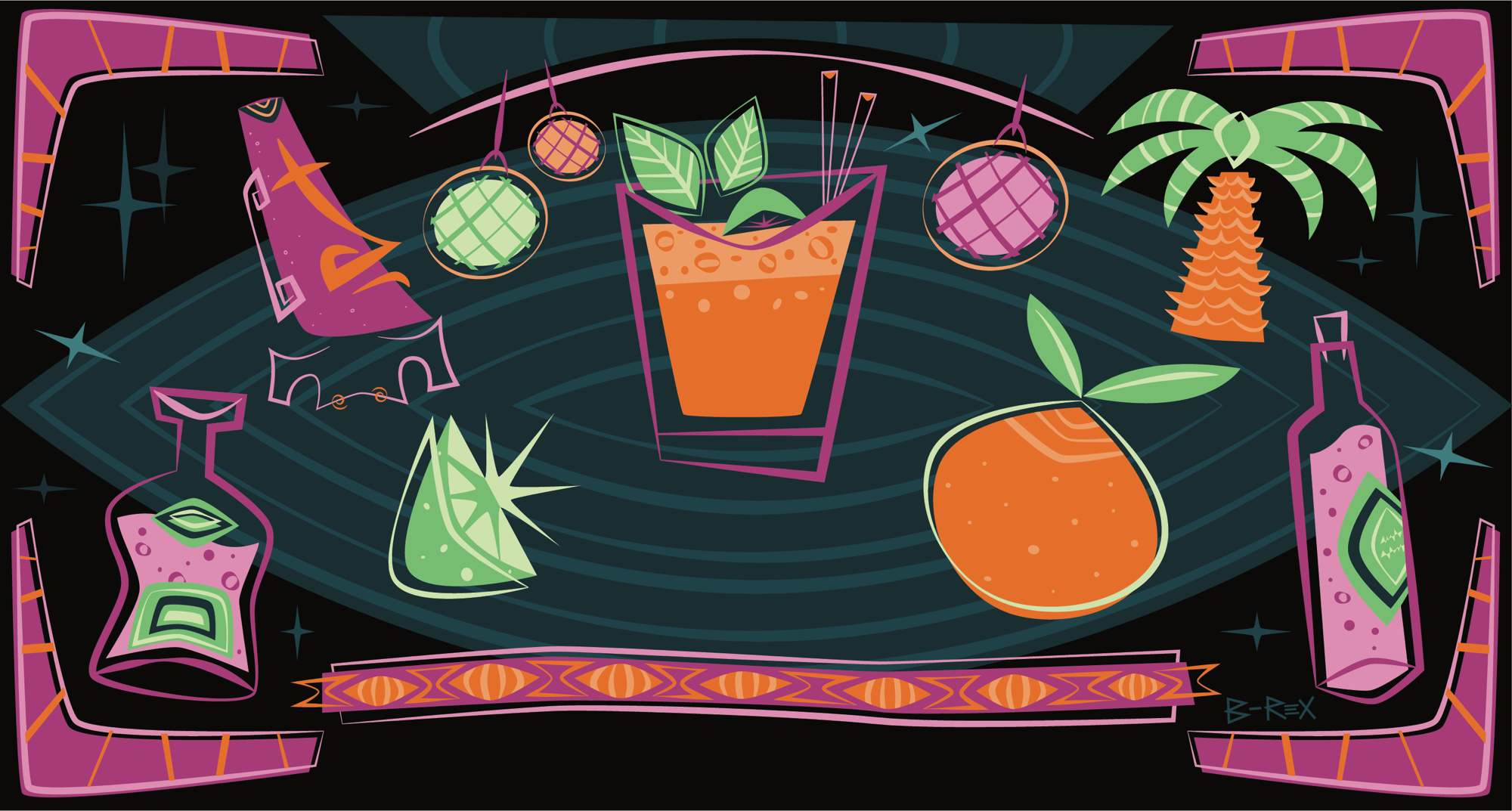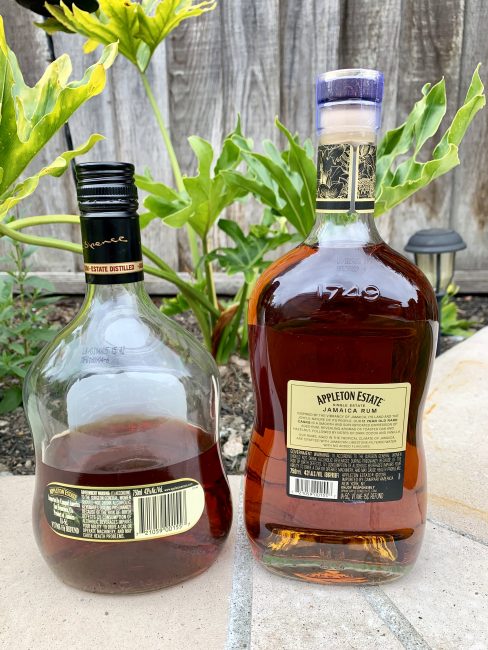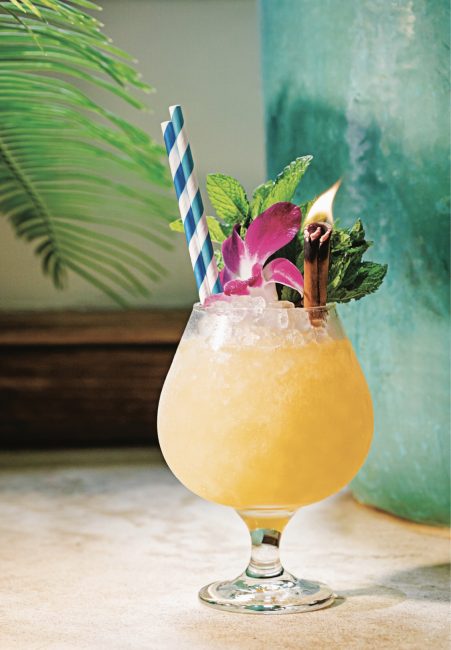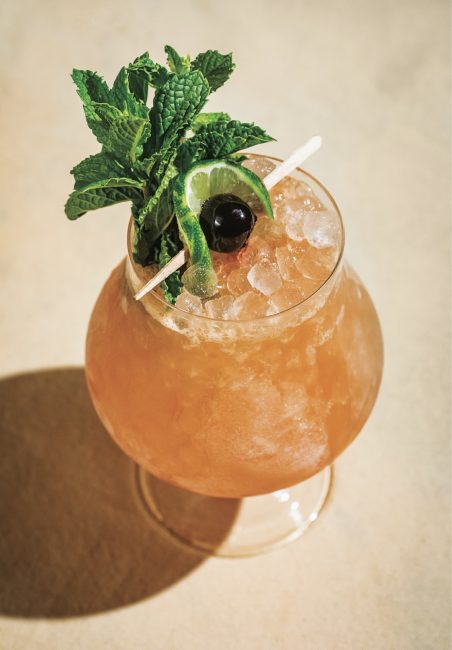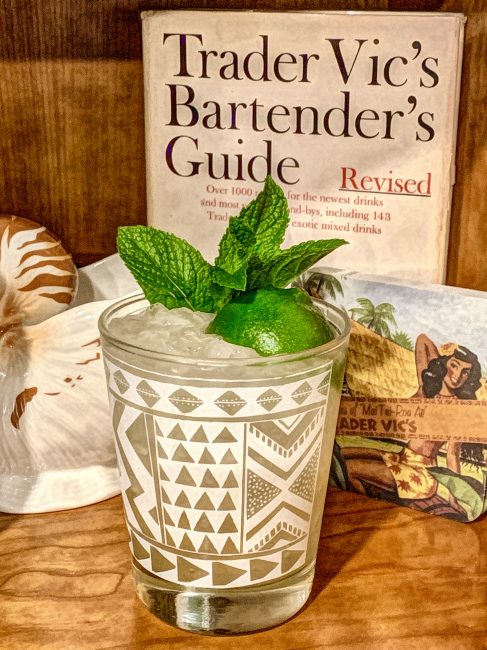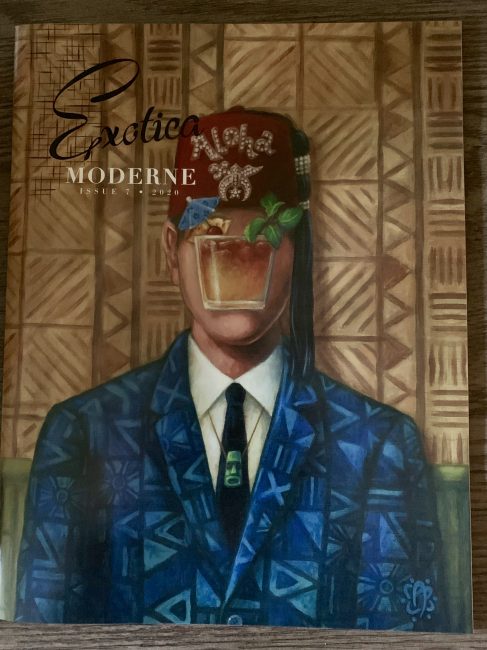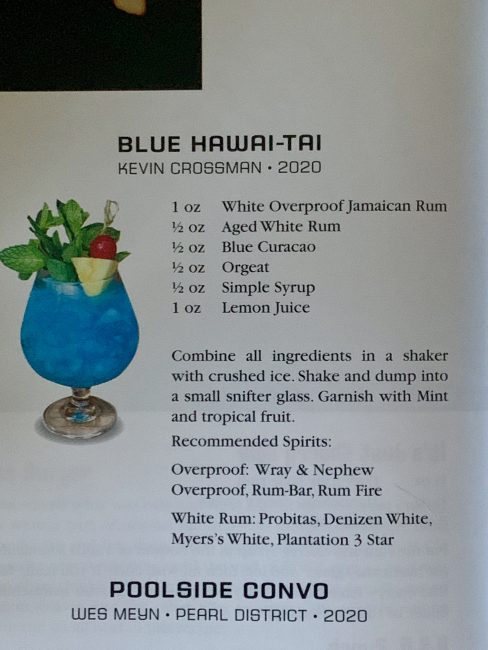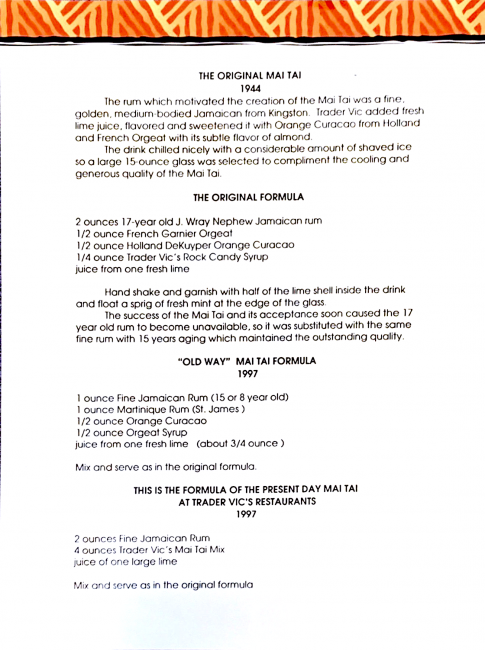Appleton Estate 12 Year Old Rum has been my favored rum for a 1 rum Mai Tai for a while now. Previously known as “Rare Blend,” it’s now called “Rare Casks” as part of the new label and bottle style that is moving across all three of the mainstream Appleton rum brands (Signature, Reserve 8, and 12 Rare). While the Reserve 8 is a assuredly a new blend (the ABV goes from 40 to 43), supposedly the 12 is not changing. But I heard from some people online that it was different.
In the Mai Tai: I prepared two Mai Tais identical except for the rum. I could not taste the difference.
In the glass: tasting the two rums neat, I do taste a slight difference. The older Rare Blend has more of an oak barrel taste, whereas the Rare Casks does have a hint more of a Jamaican funk present. Very slight differences. It’s still a great rum that’s available widely for a very good price ($33 at Costco, mid-$40s at fine liquor stores). Go out and get it.
The new bottle takes up a bit less surface area in my liquor cabinet, and now features a cork (!). It still features the gold and black color scheme and now more prominently displays the signature of master blender Joy Spence. I’m totally liking this new bottle style.
Book Review: Easy Tiki by Chloe Frechette
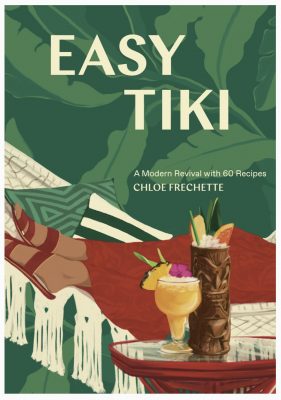 While this book doesn’t break any new ground, it’s a quite accessible resource for people getting started. The book covers in light detail the history of tiki, basics of rum, and then presents fairly straightforward and simple recipes. No strange or unusual ingredients, like you sometimes find in these recipe books. It’s kind of like if 2019’s Minimalistic Tiki and Tiki: Modern Tropical Cocktails books got together and had a baby.
While this book doesn’t break any new ground, it’s a quite accessible resource for people getting started. The book covers in light detail the history of tiki, basics of rum, and then presents fairly straightforward and simple recipes. No strange or unusual ingredients, like you sometimes find in these recipe books. It’s kind of like if 2019’s Minimalistic Tiki and Tiki: Modern Tropical Cocktails books got together and had a baby.
Too often when things are simplified in these books it ends up creating inaccuracies or the topics are so simplified as to be not understandable. Thankfully, Easy Tiki avoids these problems very well.
There are some good recipes here, including the Mai Sha Roa Na (from False Idol) and a very intriguing Breakfast Mai Tai. There is the Quarantine Order, Staycation, Carrot Colada, and a bunch of other interesting recipes.
The book is available now from your favorite booksellers. I bought my in Apple Books and the presentation in the app is pretty good. There are some very nice photographs too.
While this won’t replace the deep coverage you find the Smuggler’s Cove, Sippin’ Safari, or Minimalist Tiki books, Easy Tiki is a good resource and potentially helpful option for tiki newbies.
Sea Wynde Mai Tai
Pinky Gonzales
A Tequila cocktail for Cinco de Mayo
This was my once a year attempt to make a cocktail with tequila that I actually like. In years past I’ve tried the Pinky Gonzales, a Mai Tai variant from Trader Vic’s. Previously I haven’t loved this but this year the tequila taste was an enhancement rather than a detriment. I must be getting used to the spirit, or the balance of other ingredients worked better this time. Heavier Orgeat pour, possibly.
Pinky Gonzales
1 oz Lime Juice
½ oz Cointreau
“Heavy” ½ oz Orgeat
¼ oz Demerara Syrup
2 oz Tequila
Pictured is the famed 1972 Trader Vic’s Revised Bartender’s Guide. A seminal book then, a seminal book now. Tonight the toast is to the Trader.
Hawaii 5-3 Mai Tai with 8 Rums
Blue Hawai-Tai in Exotica Moderne Magazine
New issue of Exotica Moderne!
A ray of sunshine is the new release of the magazine covering the tiki lifestyle, including artists, music, and essays. This time, I have a cocktail published which makes it three issues in a row with photos, an article, or a recipe. It makes me feel good to contribute this magazine. Head on over to House of Tabu and pick up your copy.
The Old Way Mai Tai
This term has been the matter of some debate amongst tiki nerds. It has been used most recently to refer to a Mai Tai made with a 151 float, a practice developed at the now-shuttered second Trader Vic’s location in San Francisco. According to the story in Smuggler’s Cove by Martin and Rebecca Cate, a long-time customer liked his Mai Tais this way and the name was adapted based on the patron’s age.
But as recently as the 1990s, the Old Way Mai Tai was how Trader Vic’s referred to the cocktail made with the original ingredients and not using the Mai Tai mix that was used in place of the orgeat and curaçao. You can see this on some press materials distributed through the late 1990s, and Trader Vic’s grandson Peter Seely used that term in an interview in 1998. Today, the “1944 Mai Tai” is the most commonly used term to designate a Mai Tai made according to the original formula and with scratch ingredients and Trader Vic’s uses the term “Original Mai Tai” for trademark reasons.
The Old Way Mai Tai recipe shown here is also notable in its use of the St. James Rhum from Martinique. This agricole-style rhum made from sugar cane juice differs from the Jamaican rum that is made from molasses and was used in the original Mai Tai in 1944. During yesterday’s Zoom webinar organized by Trader Vic’s, cocktail historian Jeff “Beachbum” Berry theorized that the use of St. James dated back to the 1960s at Trader Vic’s locations. Eve Bergeron of Trader Vic’s noted that the Trader Vic’s Mai Tai Rum sold in the late 1960s-1980s contained 70% Jamaican Rum, 20% from Martinique, and 10% Virgin Islands.
